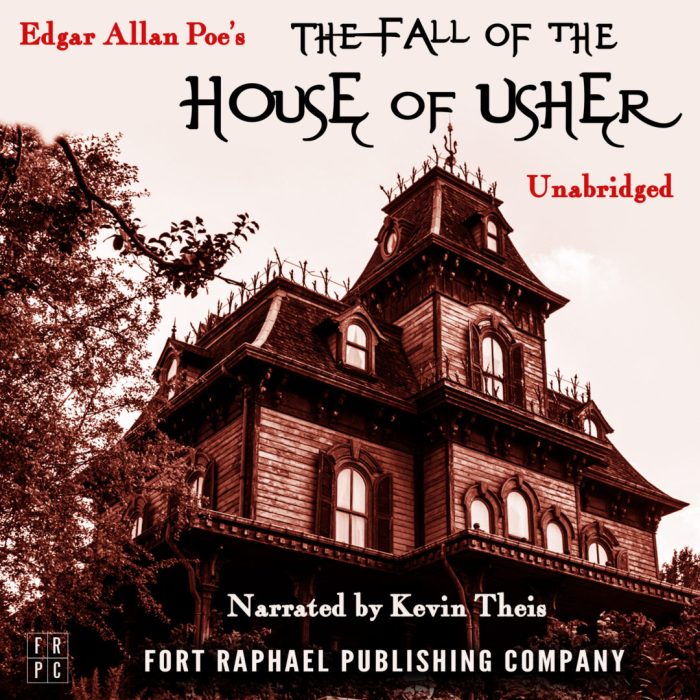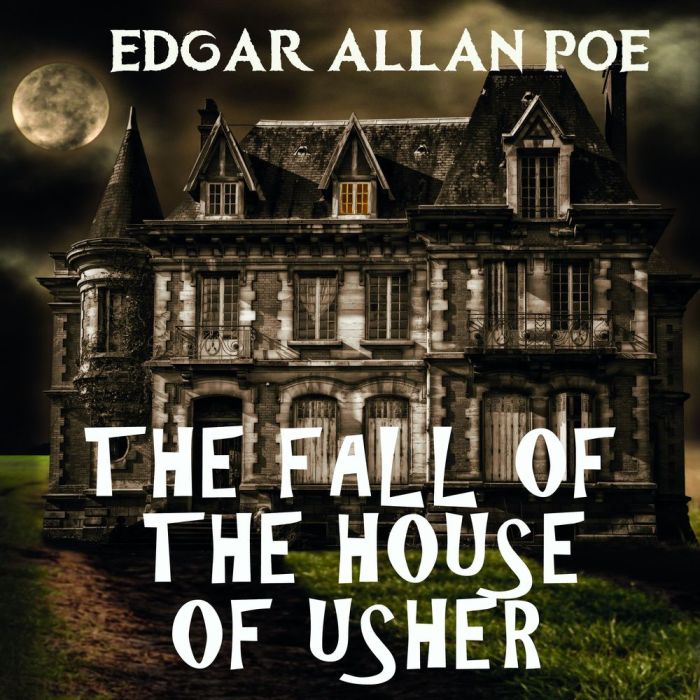The fall of the house of usher analysis pdf – The Fall of the House of Usher, a gripping tale by Edgar Allan Poe, invites readers into a world of mystery and the macabre. This in-depth analysis, presented in a comprehensive PDF format, delves into the literary devices, character complexities, and profound themes that make this Gothic masterpiece a timeless classic.
From the evocative setting to the haunting symbolism, this analysis unravels the intricate tapestry of Poe’s storytelling, providing a deeper understanding of the characters’ mental states, the story’s underlying motifs, and its enduring legacy in Gothic literature.
Literary Devices

The setting of “The Fall of the House of Usher” plays a crucial role in establishing the eerie and oppressive atmosphere of the story. The crumbling mansion, surrounded by a desolate landscape, mirrors the decaying state of the Usher family and foreshadows the tragic events that unfold.
Symbolism is also prevalent throughout the story. The house itself symbolizes the decline and fall of the Usher family, while the tarn that surrounds it represents the stagnant and corrupting influence of the past. The narrator’s vivid descriptions of the house’s “vacant eye-like windows” and “rank sedges” contribute to the sense of decay and isolation.
Foreshadowing and irony are used to create a sense of impending doom. The narrator’s initial description of the house as “a mansion of gloom” foreshadows the tragic events that will occur within its walls. The irony lies in the fact that the narrator is invited to the house as a guest but ultimately becomes trapped in a nightmare.
Character Analysis
Roderick Usher is a complex and enigmatic character who embodies the themes of madness and decay. He is a man haunted by his family’s past and the impending death of his sister, Madeline. His mental state is fragile, and he is prone to hallucinations and delusions.
The relationship between Roderick and Madeline is both symbiotic and destructive. They are deeply connected, but their bond is also marked by a sense of incestuous desire. Madeline’s illness and eventual death are symbolic of the decline of the Usher family and the extinction of their bloodline.
The unnamed narrator serves as an observer and confidant to Roderick Usher. He is drawn into the Usher’s world of madness and decay, but he ultimately escapes the tragic fate that befalls the family.
Themes and Motifs

Madness is a central theme in “The Fall of the House of Usher.” Roderick Usher’s mental instability and hallucinations reflect the psychological disintegration of the Usher family. The story also explores the theme of decay, both physical and mental. The crumbling mansion and the dying Madeline symbolize the decline and fall of the Usher family.
The supernatural is another important theme. The narrator’s experiences in the house, including his encounter with the resurrected Madeline, suggest that the supernatural world exists and that it can have a profound impact on human lives.
The motif of the house itself is significant. The house is a symbol of the Usher family and their decaying legacy. It is also a representation of the narrator’s own fears and anxieties.
Gothic Elements
“The Fall of the House of Usher” is a classic example of Gothic literature. It employs many of the genre’s characteristic elements, including a gloomy atmosphere, supernatural events, and psychological horror.
The story’s setting is dark and foreboding, with a crumbling mansion surrounded by a desolate landscape. The narrator’s descriptions of the house’s “vacant eye-like windows” and “rank sedges” create a sense of unease and decay.
Supernatural events play a significant role in the story. The narrator witnesses the resurrection of Madeline Usher and the collapse of the house into the tarn. These events create a sense of mystery and suspense, and they contribute to the story’s overall atmosphere of horror.
The story also explores psychological horror. Roderick Usher’s mental instability and hallucinations create a sense of fear and dread. The narrator’s own experiences in the house, including his encounter with the resurrected Madeline, contribute to the story’s psychological tension.
Historical and Cultural Context: The Fall Of The House Of Usher Analysis Pdf

“The Fall of the House of Usher” was written in 1839, during a period of great social and cultural change in the United States. The Industrial Revolution was transforming the country, and new technologies were emerging. At the same time, the nation was grappling with issues of slavery and westward expansion.
Poe’s personal experiences and beliefs influenced the story. He had lost his mother and foster mother at a young age, and he suffered from depression and alcoholism. These experiences contributed to his fascination with death and decay.
The story also reflects the social and cultural values of its time. The emphasis on family and lineage was a common theme in Victorian literature. The story’s exploration of madness and the supernatural also reflects the growing interest in psychology and the occult during this period.
FAQ Guide
What is the significance of the setting in The Fall of the House of Usher?
The dilapidated mansion and desolate landscape mirror the mental and emotional states of the Usher siblings, creating an atmosphere of decay and impending doom.
How does Poe use foreshadowing in the story?
Poe subtly hints at the tragic events to come through vivid imagery and symbolic language, building suspense and a sense of inevitability.
What is the relationship between Roderick and Madeline Usher?
Their incestuous bond represents the destructive nature of isolation and the blurring of boundaries between life and death.